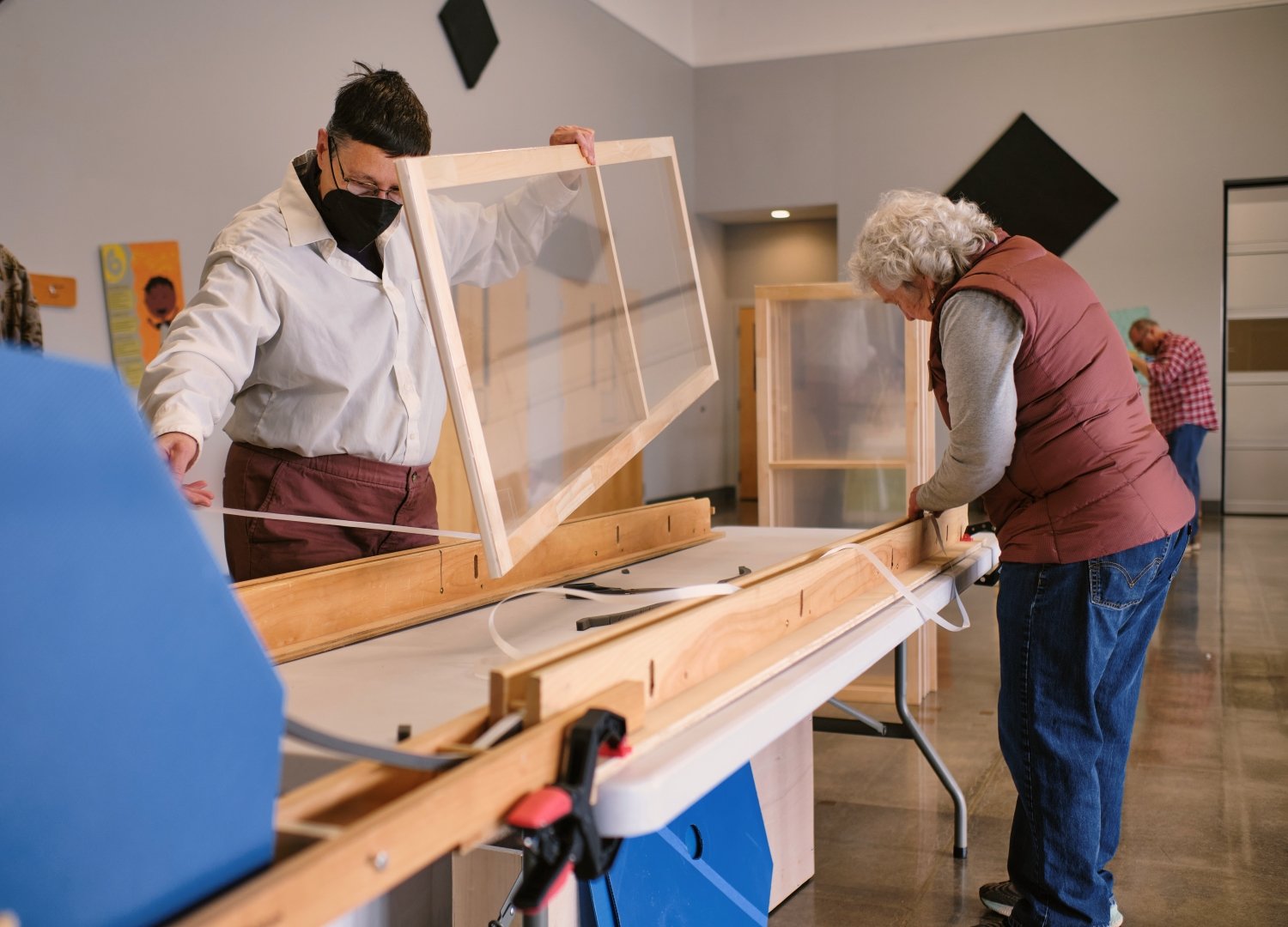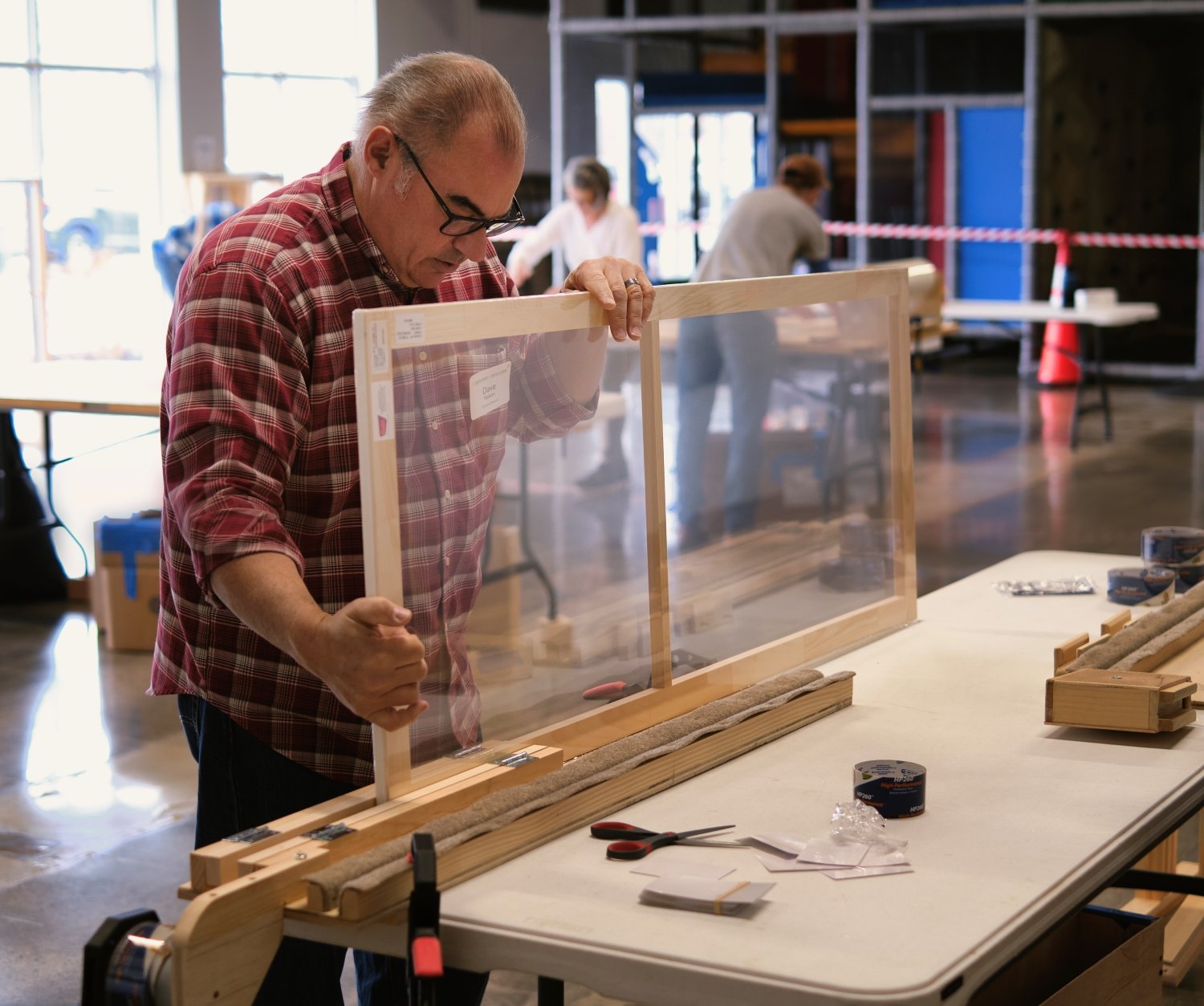Owning your carbon footprint when you rent
By Amy Paradysz
AS A RENTER, YOU MIGHT NOT REALIZE how many options you have when it comes to reducing your carbon footprint at home. Sure, a lot of the big decisions have already been made, from the building materials to the appliances. But you still have some choices to make that can reduce your electricity and fuel consumption, promote the use of energy sources with lower environmental costs, and send less waste to the landfill. We’ve tracked down specific organizations and businesses that can help you lessen your environmental impact at home.
LIGHTING SOLUTIONS
We’ve been hearing about LEDs for years and for good reason: reducing your carbon footprint can be as easy as changing a lightbulb. Light emitting diodes, or LEDs, produce light up to 90% more efficiently than incandescent light bulbs. And the bulbs themselves are becoming quite affordable.
“I got a three-pack of 60-watt soft white LEDs for a dollar each and replaced the incandescent bulbs in my apartment, which will help me save $15 a year,” says Lily McVetty, an Efficiency Maine program assistant.
Efficiency Maine maintains a list of the best bulb prices statewide. Find it at efficiencymaine.com.
Other simple tips: Use lower-watt light bulbs where you can; turn off lights you’re not using; and consider light sensors for outdoor lights so they turn on only when it’s dark out.
An electricity monitor, available at Maine libraries, is a simple way to gauge how much electricity your appliances use—both when they are on and when they are plugged in and off. PHOTO: KATIA HRYCAY
ELECTRICITY MONITORS
How did McVetty calculate that $15 in annual savings? Using an electricity monitor, available for checkout at any participating public library in Maine. The monitor is the size of an old-school cell phone, and it comes with easy instructions on how to plug it in with any appliance and calculate how much you spend to use that machine per year. And if you don’t have a library in your town, you can visit the Maine State Library website to find out how to get an electricity monitor delivered to you by postal mail.
“I tested my TV and it cost roughly $20 a year to run,” McVetty says. “On the other hand, I tested my space heater, and it costs roughly $200 a month to run.”
Armed with this sort of information, it’s easier to make smart choices. When you find a power drain, you can choose to use it less often or possibly upgrade to a more efficient ENERGY STAR appliance.
Tip: When you check out an electricity monitor, ask for the kids’ power worksheet as an easy and fun way to note the numbers for your appliances.
BIOFUELS
“Biofuel blends can be a direct replacement for home heating oil,” says Rodger Strickland, vice president of Maine Standard Biofuels. “We collect used cooking oil, partnering with restaurants and schools from all over Northern New England, and we transform waste into energy.” Their Bio20 biofuel is a blend of 20% locally produced biofuel and ultra-low-sulfur heating oil.
Using the Environmental Protection Agency’s greenhouse gas calculator, Strickland gives these examples: Fill your 250-gallon tank with Bio20 biofuel rather than conventional heating oil and you’ll reduce your carbon footprint by 3,760 lbs. That’s the same as diverting half a ton of waste from the landfill. Another way to look at it: over three years of using biodiesel, you’ve reduced your carbon footprint the same amount as if you’d given up driving a conventional car for a year. It’s simple—no furnace conversion or modification is needed. The price of the fuel is the equivalent to conventional heating oil, and it burns cleaner.
Maine Standard Biofuels delivers in the Greater Portland area—from Biddeford north to Brunswick and Lewiston—with more than 600 households heating their homes, collectively reducing their carbon footprints by hundreds of thousands of pounds of carbon a year. Other Maine biofuel suppliers include Estes Oil & Propane in York County and Clean Green Energy in Penobscot County.
Composting reduces greenhouse gases at landfills and puts nutrients back into the soil. PHOTO: GARBAGE TO GARDEN
COMPOSTING
Food scraps and yard waste together make up more than 30% of what we throw away at home, according to the Environmental Protection Agency, and all this organic material can instead be converted to compost. Composting keeps all this kind of waste out of landfills, where it not only takes up space but also, crammed into trash bags, releases methane, a potent greenhouse gas.
You don’t need a yard to compost, either. It’s easy in many parts of Maine, even for renters, thanks to compost services such as Garbage to Garden in southern and central Maine and part of Massachusetts, ScrapDogs Composting in Midcoast Maine, and Mr. Fox Composting in York County and New Hampshire.
“One household composting for three years can divert about one ton of food waste from landfills,” says Annika Schmidt, Director of Marketing Communications for Garbage to Garden. “When you think about it like that, it’s empowering.”
Garbage to Garden customers put their food scraps in a five-gallon bucket, which is picked up weekly and swapped out for a clean bucket. Request a bag of compost, and they drop that off too. “It’s that simple,” Schmidt says. “You collect your scraps, and we do the dirty work.”
Compost is available for bulk purchasing and is also donated to schools, community gardens, the Maine Cooperative Extension Master Gardener program and Maine Foodscapes.
Garbage to Garden will even pick up used kitchen grease and bring it to the Maine Standard Biodiesel biorefinery, where the fat is used to make the detergent that Garbage to Garden uses to clean their buckets.
ReVision Energy’s Long Pond community solar farm on Mount Desert Island. PHOTO COURTESY OF REVISION ENERGY
COMMUNITY SOLAR FARMS
Thanks to community solar farms (CSFs), you don’t have to be a homeowner—or even a solar panel owner—to use solar power as a service. You just buy a share of, or subscribe to, a large-scale solar farm to get kilowatt hour (kWh) credits. Power generated at the CSF feeds into the grid and members get credits on their electrical bills.
“Community solar is a great option for people who rent or do not have sites that are well-suited for solar,” says John Luft, a branch manager with ReVision Energy. Mainers who buy their power this way pay at least 10% less, while reducing their carbon footprint and supporting the growth of solar power in our region.
WINDOW INSERTS
The Unitarian Universalist Church in Rockland did an energy audit in 2010 and found they were losing considerable heat through their sanctuary windows. Retired engineer Dick Cadwgan heard about the church’s challenge with heat loss and made some window inserts. Parishioners noticed how much warmer it was and wanted inserts for their homes. Churchgoers got together that winter and built 185 inserts for members of the congregation.
“And then word spread, and they hatched this community-build model,” said Laura Seaton, executive director of WindowDressers, which was established as a nonprofit in 2012. “It’s a very down-to-earth solution to a common problem. Our inserts don’t require any fasteners—there are no screws, glue or tape. Nothing that pulls paint off. They’re held in place by friction. There’s a wood frame and foam gasket that goes around the edge. It’s a snug fit. It’s just slide-in, slide-out. And people tell us they save 10-20% on their heating costs, depending on the quality of the windows they started with.”
To get inserts from WindowDressers, make an appointment to have your windows measured, get an estimate and sign up to participate in a community build, volunteering for four hours for every three to five inserts you order. The finished product is white pine with a double layer of plastic, clear and tight with good clarity. The frames last indefinitely, while the plastic needs a rewrap after about 7–10 winters.
If you prefer glass over plastic and buying outright rather than volunteering to get your inserts, Innerglass® interior storm windows could be ideal. These vinyl-framed windows, available in tempered glass, Plexiglas® and laminated glass, also mount inside the primary window, where they seal tightly, eliminating drafts, condensation and noise. You can also opt for low-emitting (low-e) glazing, which lets in light but not heat, saving even more energy in the summer months. The company reports that tests show these inserts to be up to five times better at lowering heating and air conditioning costs than exterior storm windows. They are a fraction of the cost of replacing windows. And when you move to your next rental, you can take your inserts with you.
WindowDressers volunteers demonstrate building insulating window inserts at the 2022 Green Home + Energy Show in South Portland, Maine. PHOTOS: SALTY LENS PHOTOGRAPHY.
This article appeared in the Spring 2022 edition of Green & Healthy Maine HOMES. Subscribe today!
Find Maine experts that specialize in healthy, efficient homes in the Green Homes Business Directory.







